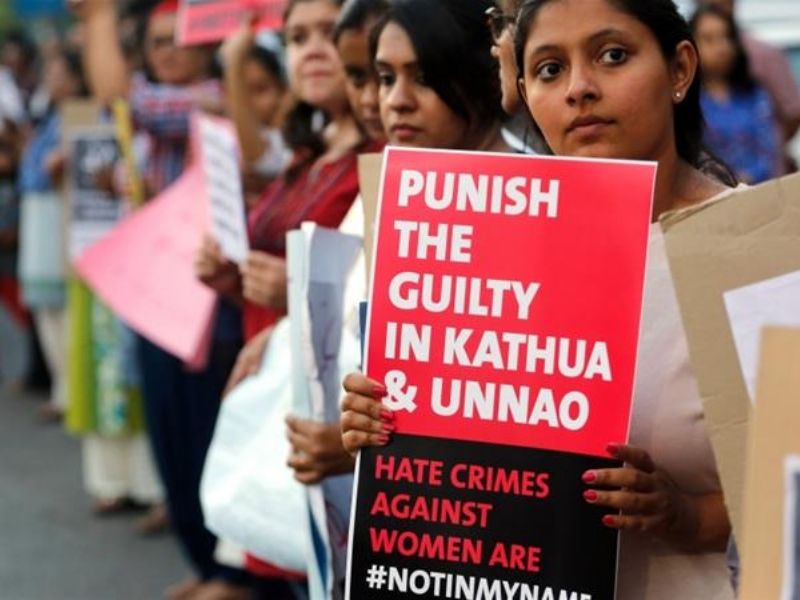
The recent wave of rape-murders of women citizens across the country from Unnao and Lucknow in Uttar Pradesh to Hyderabad and Ranchi, the thousand unnatural shocks that women are heir to on a daily basis and the helpless outrage of decent society, has like never before exposed the utter intellectual aridity and lack of problem-solving skills of the establishment, academy included – India’s rape crimes culture. Regrettably the country’s leader writers and fire-breathing television news anchors are merely trimming the branches instead of addressing the root causes of gender crimes sweeping the nation.
The first of several root causes is rock-bottom official priority accorded to investment in law and order, the primary obligation of government at the Centre and in the states, since independence. The plain truth is that with only 2.25 million ill-trained and ill-equipped police personnel spread across the 3.28 million sq. km subcontinent, India is a seriously under-policed nation. Against the UN recommended norm of 300 police personnel per 100,000 population, data last published by the United Nations Office on Drugs and Crime (UNODC) in 2013 indicates that the Indian norm is 150:100,000 — the fifth lowest among 71 countries for which the office collated data.
Moreover of the sanctioned strength of 2.25 million, 47,000 posts are vacant and over 50,000 personnel of the country’s grossly inadequate police force are deployed to guard politicians and VIPs. Against India’s 150 police per 100,000 people, the UK employs 204, Sri Lanka 424, Turkey 524 and USA 969. Little wonder sexual predations by crazed lumpens with easy access to pornography streamed over the Internet (repeated appeals by this publication to block all pornography sites have received no support) against vulnerable women and children are assuming tidal wave proportions.
The pernicious problem of severely depleted policing of a subcontinental nation is compounded by the pathetic condition of the judicial system burdened with a world record backlog of 33 million cases. Here again, the primary cause of law’s delay in India’s rape crimes culture is the severe shortage of judges and courtrooms. Although India’s judges-population ratio has risen from a pathetic 17 per million people in 2014 to 20 per million in 2018, this ratio is also way below global norms. China has 144 judges and magistrates per million people, USA 980, Mexico 430 and Egypt 100.
These statistics are eloquent testimony that India’s middle class, not excluding the academy, seems totally unaware that substantial investment in the law, order and justice system is the precondition of economic development. The annual investment in the law, order and justice machinery (Centre plus states) is estimated at a mere 3.08 percent of GDP.
Yet blame for neglect of law and order cannot be entirely laid at the door of government. Behind the apathy of the Central and state governments is the indifference of India’s greedy, subsidies-addicted middle class which is neither willing to pay market prices for essential goods and services, nor inclined to protest wasteful government expenditure. It is almost certain that anguished editorial pundits and television news channel anchors — some of whom command million dollar salaries — will be the first to protest additional taxation for hiring more policemen and judges. It’s hardly a national secret that although contemporary India hosts a 300 million-strong middle and upper income class, the number of the country’s income tax payers is a mere 80 million. Tax avoidance — and evasion — is a national pastime.
The manifesto of the Children’s First Party of India (CFPI, regstd. 2013, now defunct) offered useful suggestions for sharply reducing crimes against women. It proposed that the National Commission for Women at the Centre and its branches in the states are invested with power to suo motu adjudicate and impose imprisonment sentences of upto 30 days and another 30 days of community service upon anti-socials involved in ‘minor’ cases of sexual harassment and molestation. Moreover, it proposed establishing special under-cover squads of women police backed up by highly mobile (motor-cycle) flying squads backed by a special wing of helicopter-borne police personnel on 24×7 standby in all metros and state capitals to quickly apprehend, prosecute, punish and incarcerate sex offenders and predators. It also promised to confer power upon session and high courts to order caning of convicted sex offenders in addition to imprisonment and the death penalty. By enacting enabling legislation on these lines, the CFPI promised a 75 percent drop nationwide in criminal offences against women within 12 months. Alas to no avail.
Quite obviously building and maintaining a robust law and order infrastructure requires substantial, but necessary, funding. Resources can be raised by imposing a dedicated cess of Rs.1,000 payable annually by all income tax assessees into the Nirbhaya Fund established by the Central government after the brutal rape and murder of a paramedic student in Delhi in 2012. This would raise Rs.8,000 crore per year, double the amount invested in the police and justice system in the Union budget 2019-20.
In addition, since corporate India employs a large number of women, India Inc could pay an additional one percent of its revenue into the Nirbhaya Fund, adding another Rs.7,000 crore. The total amount thus raised annually would be a tidy Rs.15,000 crore. Moreover, this augmented, separate and dedicated women’s safety fund should be paid into the Nirbhaya fund administered by a National Law, Order & Justice Commission chaired by the comptroller general of India supported by six inspectors-general of police and high court justices from the states, appointed in rotation.
In short, it is possible to make India safe for women and eliminate India’s rape crimes culture. All that’s required is national determination and middle class willingness to pay for the security of women who, let’s not forget, hold up half the sky.























